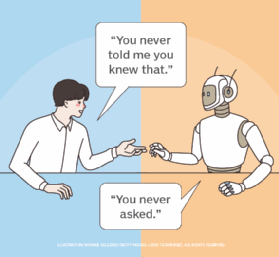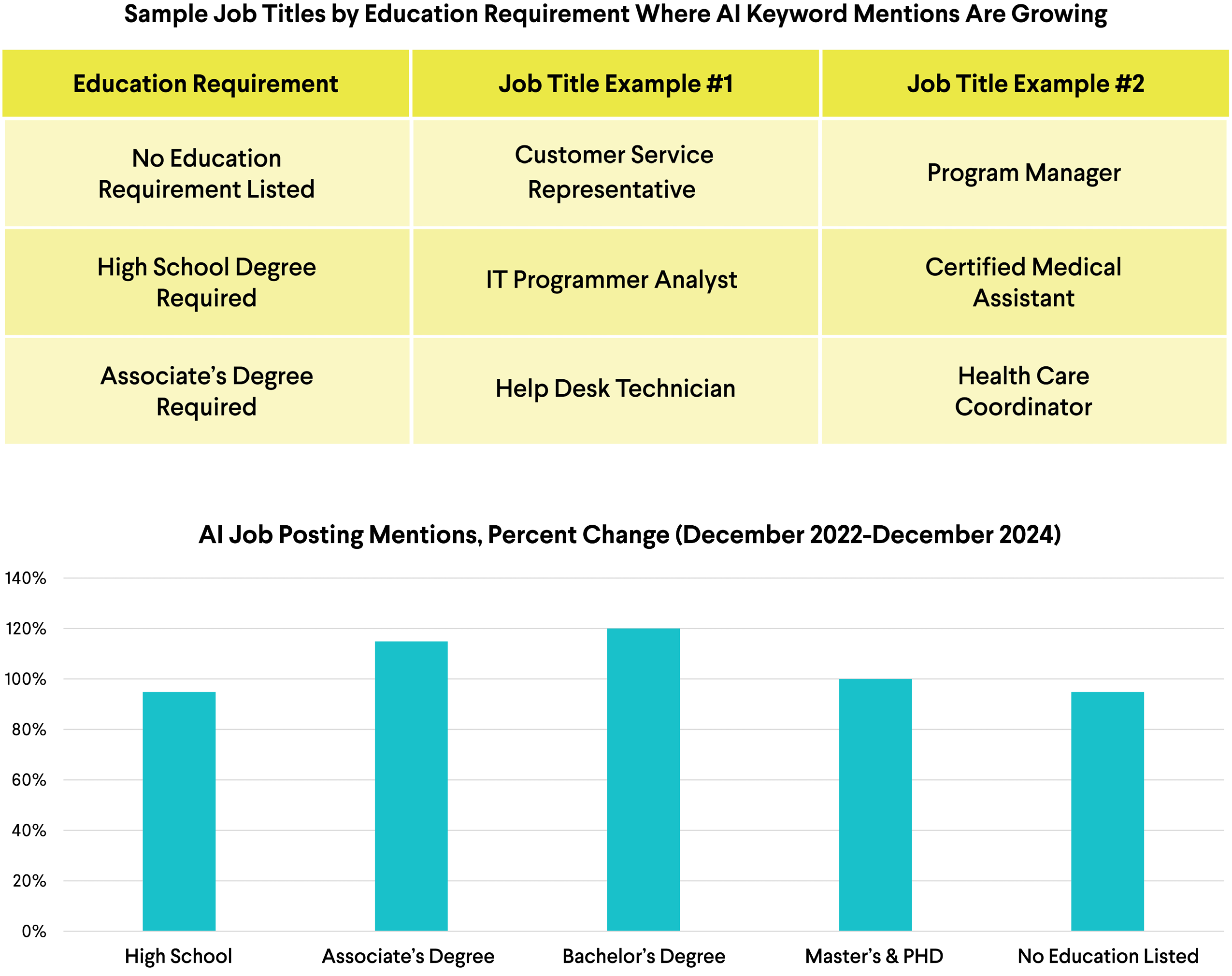Discover Pandipedia
Pandipedia is the world's first encyclopaedia of machine generated content approved by humans. You can contribute by simply searching and clicking/tapping on "Add To Pandipedia" in the answer you like. Learn More
Expand the world's knowledge as you search and help others. Go you!
Introduction
The rapid rise of generative AI has led to a transformation in how work is structured and executed across industries. New technologies such as ChatGPT, large language models, and digital agents are not only generating creative content but are also revolutionizing enterprise workflow management through agent orchestration. In this era, organizations are witnessing the emergence of specialized roles that range from prompt engineering to sophisticated AI agent orchestration, reflecting a shift toward integrated, human-like reasoning and dynamic coordination of tasks[1][10].
Emerging Job Categories and Skill Sets
The evolving landscape of AI has given rise to an array of specialized roles. For instance, prompt engineers are in high demand for crafting and refining input instructions for generative models such as ChatGPT, where strong communication skills and attention to detail are crucial[2][3]. Other roles extend to AI trainers, data scientists, AI designers, developers, machine learning engineers, and even natural language processing (NLP) engineers whose competencies range from developing deep neural networks to leveraging frameworks like TensorFlow and PyTorch[2][9].
Beyond these, new job categories are emerging that focus on design applications (such as generative design specialist), content review (AI content reviewers), compliance (AI compliance officers), and even roles dedicated to managing ethical concerns and data privacy in AI systems[5][10]. These roles not only require technical expertise but also an understanding of creative processes, regulatory frameworks, and human-machine interaction.
Tooling, Methodologies, and Agent Orchestration

Agent orchestration represents the next frontier in AI integration, embedding intelligence at the system level. This concept involves the coordinated management of multiple AI agents, each specialized in distinct tasks, to work together in executing complex workflows[1]. For example, vertical orchestration involves agents working within a specific application environment, while horizontal orchestration allows for dynamic coordination across different platforms in real time[1].
Technical patterns elaborated by major industry players include sequential orchestration, where agents process tasks in a predetermined pipeline, and concurrent orchestration, which enables multiple agents to operate simultaneously on the same task for diverse perspectives[7]. Additional patterns such as group chat orchestration and handoff mechanisms ensure that AI agents can debate, collaborate, and escalate tasks dynamically, embodying a form of 'agentic AI' that mimics human teamwork abilities[7][6].
Moreover, advancements in prompt engineering, as detailed in specialized guides, enable developers to design robust interfaces for these agents and enhance their interactions with other tools and external knowledge sources[8].
Career Pathways, Hiring, and Training Recommendations

Given the complexity and rapid evolution of generative AI systems, both hiring and training strategies need to evolve accordingly. Organizations are advised to look for candidates who not only possess technical proficiency in computer science, data analysis, and machine learning but also have strong communication and problem-solving skills required for prompt engineering roles[2]. Academic degree programs, specialized certifications, and hands-on experience with generative AI tools are critical for building a workforce capable of managing AI orchestration and integration across diverse platforms[4].
Hiring managers are encouraged to design roles that integrate human oversight with digital capabilities, thereby embracing a hybrid workforce model. This approach involves incorporating digital agents as active teammates rather than mere tooling supplements, ensuring that human creativity and strategic oversight complement AI automation[1][10].
On the training front, organizations should provide targeted training in areas such as agent prompt design, ethical AI considerations, and the use of orchestration frameworks. Continuous learning through courses, workshops, and industry conferences is vital to keep pace with the innovations in generative AI and multi-agent systems[2][9].
Conclusion

The generative AI era is marked by a convergence of creative content generation and intelligent automation. From prompt engineering, which optimizes the way AI models like ChatGPT interpret user inputs, to complex agent orchestration that drives system-level intelligence and workflow management, evolving job categories are reshaping the workforce. Organizations that invest in targeted hiring, robust training programs, and the development of interoperable AI systems will be best positioned to compete in a space where digital and human capabilities are increasingly intertwined. This integrated approach not only boosts operational efficiency but also cultivates an innovation-driven culture that is essential for future success[1][7].
Let's look at alternatives:
- Modify the query.
- Start a new thread.
- Remove sources (if manually added).
Introduction

The modern world is increasingly defined by digital connectivity, yet a noticeable resurgence in analog hobbies is redefining how people choose to experience leisure and creativity. As individuals seek tangible, deliberate, and sensory-rich activities in a crowded digital landscape, hobbies such as knitting, film photography, and board games are gaining renewed popularity[1][2]. This report explores the cultural drivers, key activities, practical benefits, and community growth behind this analog revival.
Cultural and Social Drivers

One of the primary reasons behind this shift is digital fatigue. Constant screen exposure has led to a yearning for slower-paced, more tactile experiences. Many people have described analog hobbies as a way to step away from endless scrolling and engage in activities that require physical interaction and focus. As articulated in several texts, the simple act of playing a record, setting up a camera shot, or handwriting thoughts is deeply connected to mindfulness and intentional living[1]. Moreover, digital overload has prompted a cultural shift where individuals, including members of Generation Z, deliberately invest in analog practices to counterbalance the constant digital stimulation and stored data, thus reconnecting with a more authentic and self-affirming experience[2].
Analog Hobbies: Knitting, Film Photography, and Board Games
Film photography remains at the forefront of analog revival, with enthusiasts celebrating the unexpected outcomes and timeless aesthetics of each frame. Modern investments by major manufacturers and the introduction of new emulsions have reinforced the continuity of this traditional craft, while independent initiatives also contribute to an expanding market of alternative film products[7]. Similarly, the act of knitting has evolved from a routine task to a mindful pursuit that offers a reprieve from constant connectivity. Many find that creating something tangible with yarn not only nurtures creativity but also provides a welcome distraction from digital distractions, echoing benefits mentioned by techies and hobby enthusiasts alike[12].
Board games have experienced a significant renaissance. Once seen purely as childhood pastimes, board games now serve as a complex and engaging medium for both intimate gatherings and competitive tournaments. The industry boasts impressive statistics, with market analyses emphasizing strong revenue growth and robust community engagement. Detailed reports describe board games as offering rich strategic depth, educational value, and opportunities for social interaction that digital formats cannot match[4][10].
Benefits and Wellness Advantages

Analog hobbies offer numerous benefits, especially in a wellness context. Engaging in activities that are inherently slow-paced helps individuals experience a meditative state that counteracts the rapidity and distractions fostered by digital devices. For example, film photography requires careful planning and the acceptance of imperfections such as grain and light leaks, a process which instills a sense of accomplishment and mindfulness[1]. Knitting and similar tactile activities contribute to stress relief by demanding focused attention, thereby reducing the likelihood of burnout and digital fatigue[12].
The analog wellness trend extends beyond individual satisfaction. In settings such as phone-free spaces and curated social clubs, people are encouraged to disconnect from digital stimuli and reconnect with their physical environment. Leaders in the wellness industry highlight this movement as crucial in fostering a sense of presence and genuine human connection, elements often missing in purely digital interactions[11].
Community Growth and Market Trends
Community formation is a vital aspect of the analog renaissance. Enthusiasts of film photography, knitting, and board games create spaces such as meetups, workshops, and hobby shows that facilitate interpersonal connections beyond the virtual realm. In-person board game cafes and clubs are flourishing, offering dedicated spaces for fans to share experiences and strategies. According to market statistics, the board game sector is experiencing robust growth, evidenced by rising revenues, expanding game collections, and an ever-growing number of community events and conventions that cement shared interests and collective learning[4][5].
Similarly, the analog revival in film and craft communities is supported by increasing investments from major companies and renewed interest among younger demographics. These developments not only fuel nostalgia but also address modern demands for authenticity and intergenerational exchange. Major brands and independent designers alike are seizing on the analog momentum, using both traditional methods and selective digital support to broaden the reach of tactile hobbies[7].
Conclusion
The comeback of analog hobbies in the age of smartphones represents a thoughtful response to the relentless pace of digital life. With activities such as knitting, film photography, and board games, people are reclaiming space for tangible creativity, mindfulness, and authentic human connection. This revival is not merely a nostalgic trend but a holistic movement that integrates wellness, artistic expression, and community building. As cultural attitudes shift towards slower, more deliberate ways of living, the analog renaissance is poised to continue its steady growth, promising lasting benefits for individuals and communities alike[1][11].
Let's look at alternatives:
- Modify the query.
- Start a new thread.
- Remove sources (if manually added).
Get more accurate answers with Super Pandi, upload files, personalised discovery feed, save searches and contribute to the PandiPedia.
Let's look at alternatives:
- Modify the query.
- Start a new thread.
- Remove sources (if manually added).
Quantum computing uses qubits that can exist in multiple states simultaneously.
Error correction is essential for maintaining qubit stability in quantum computing.
Quantum computing has the potential to transform industries like cryptography and drug discovery.
As of 2024, noise and decoherence remain significant challenges for quantum computation.
Developing quantum algorithms could reshape cybersecurity with new encryption methods.
Let's look at alternatives:
- Modify the query.
- Start a new thread.
- Remove sources (if manually added).

Digital journalists must navigate this landscape with vigilance, ethics, and a commitment to truth.
Unknown[1]
Journalists need to show their audiences why their institution should be worthy of trust.
Joy Mayer[3]

The most vigorous defense against online misinformation remains the ethics of journalism.
Unknown[1]
Engaging directly with readers can also enhance credibility.
Unknown[1]
An active fact-checking community is essential on social media.
Unknown[5]
Let's look at alternatives:
- Modify the query.
- Start a new thread.
- Remove sources (if manually added).
AI-generated image detection accuracy rates exceed 95%.
Leading tools for detection include Faster-Than-Lies and AI or Not.
Common artifacts in AI-generated images include inconsistent shadow sources and incorrect reflections.
Decopy's AI image detector analyzes patterns and metadata.
Robustness to adversarial perturbations is crucial for effective detection.
Let's look at alternatives:
- Modify the query.
- Start a new thread.
- Remove sources (if manually added).
Get more accurate answers with Super Pandi, upload files, personalised discovery feed, save searches and contribute to the PandiPedia.
Lab-grown leather can be produced in about two weeks.
It uses 80% less water compared to traditional leather production.
Lab-grown leather generates 90% fewer emissions than conventional leather.
The leather industry contributes 8-10% of global greenhouse gas emissions.
Consumer demand for lab-grown leather is rapidly increasing.
Let's look at alternatives:
- Modify the query.
- Start a new thread.
- Remove sources (if manually added).
Let's look at alternatives:
- Modify the query.
- Start a new thread.
- Remove sources (if manually added).
Transcript
Welcome to our podcast on the hidden cost of artificial intelligence hallucinations. Today we explore how fabricated facts from artificial intelligence models can lead to serious economic loss and damage to reputation. Imagine a scenario where a trusted legal document is based on case law that never existed, prompting a high-profile lawsuit and a steep drop in market value. This is not just a mistake but a sign of failure in quality control that can cost companies millions in lost revenue. In regulated sectors, such errors may invite legal liabilities and permanently erode public trust. By ensuring that artificial intelligence systems rely on verified data and human oversight, organizations can reduce these risks and preserve their brand credibility. Let us remain vigilant and invest in robust safeguards to make our artificial intelligence systems accountable and accurate. Thank you for listening.
Let's look at alternatives:
- Modify the query.
- Start a new thread.
- Remove sources (if manually added).
Transcript
Imagine a world where your skills count more than the piece of paper you were given at graduation. Today, many employers are questioning the old rule that a college degree is the only ticket to a good job. Instead, businesses are turning to a hiring method that focuses on real talent. This approach, known as competency-based hiring, evaluates what you can do rather than where you learned to do it. Companies once tied to degree inflation are now offering opportunities to skilled workers from all walks of life. They are discovering that hands-on experience, the ability to learn quickly, and solid problem-solving skills can create a more diverse and effective workforce. As more organizations move away from the rigid paper ceiling, more workers can finally break free and be recognized for their true abilities. The future of hiring is here, and it values your competencies over a college diploma.
Let's look at alternatives:
- Modify the query.
- Start a new thread.
- Remove sources (if manually added).







